The Advanced Placement (AP) World History exam can be scary! There’s a massive amount of material to learn, so you’ll need to make a plan to study for the AP® World History exam. Smart study planning will help you to master the subject, prepare for the test, and be ready to sit down for the big exam with confidence.
The Test Format
Before you start preparing for the AP® World History test, you need to know what to expect. The AP® World History exam follows a set structure with times and percentages of the score assigned to each section and part. There are two sections with two parts in each.
• Section 1: Part A
Part A consists of 55 multiple choice questions to be completed in 55 minutes. Questions are arranged in groups of two to five and refer to specific stimuli in the form of texts, maps, images, graphs or other materials. Section 1 Part A amounts to 40 percent of your test grade.
• Section 1: Part B
Once you’ve completed the multiple-choice questions in Part A, you’ll have four short answer questions to fill out in 50 minutes. Plan on spending around 12 minutes per question. Just like the groups of multiple-choice questions, these questions will refer to maps, texts or images. The short answer questions account for 20 percent of your total score.
• Section 2: Part A
Section 2 includes two long essays. Part A is a document-based question that requires that you read, analyze, synthesize and assess historical data and evidence. You will have 55 minutes for this question with 15 minutes to read and review the documents and 40 minutes to respond to the question. The document-based question totals 25 percent of your total score, so it can make a huge difference in your grade.
• Section 2: Part B
Part B is a free-response essay question. You can choose one of two comparable questions. While the questions will be equally difficult, they may deal with different periods or topics. All free-response question options require you to analyze a historical issue or event in world history thoughtfully. This question takes the final 35 minutes of the test time and is worth 15 percent of your grade.
A Look at the AP® World History Exam
Remember—you’ve already learned this information. When you’re making a study plan, you’re reviewing, not mastering new information. Your AP® World History class and curriculum should have prepared you with the historical thinking skills, thematic learning objectives, and concept outlines you’ll be asked about for the test. Think of it this way—the historical thinking skills taught you how to study and think about history, while the learning objectives explain why you learn about different factors in history and why they’re important. The concept outline is a chronological outline divided into key points for various periods and geographic locations.
In addition to knowing the themes and concepts, keep in mind that you’ll need to know your world geography for AP® World History. Understanding geography is essential to understanding how societies have interacted with one another over time through trade, exploration, and conquest.
What Are Historical Thinking Skills?
AP® World History doesn’t just want you to learn names and dates. In fact, the key point of Advanced Placement World History is to teach you to think broadly about history and about why history matters. The College Board has defined several specific historical thinking skills that are essential to the study of history.
These historical thinking skills are essential to success on the AP® World History test, particularly the document-based question and the essay question. If you can’t think about history using these thinking skills, you won’t succeed on these questions. There are four categories of historical thinking skills.
1. Analyzing Historical Sources and Evidence
You need to learn how to read history, think about history, and assess evidence and sources. For the AP® World History test, you’ll need to be able to read and understand a variety of different types of documents including texts, maps, and art. Also, you’ll need to recognize the difference between primary and secondary sources and be able to analyze both effectively.
2. Making Historical Connections
Making historical connections asks you to compare, contextualize, and synthesize. Comparison means that you can identify, evaluate, and consider various viewpoints on a historical event. Contextualization lets students connect events and processes in history to the time and place, as well as to a broader role in the world. Synthesis is putting it all together by making important connections between different events, periods, or even other disciplines.
3. Chronological Reasoning
Chronological reasoning consists of several different elements. Causation is the ability to identify cause and effect in history and to distinguish between causality—something that causes something else—and correlation—two things that are related, but not as cause-and-effect. Students need to be able to recognize patterns of continuity and change over time and relate these to a broader context of history. When historians break history down into individual historical periods, they are using a process called periodization. Historical periods are identified and classified in some different ways.
4. Creating and Supporting a Historical Argument
Students need to be able to create a well-thought out, evidence-based historical argument and to write out that argument in an effective way.
What Are Thematic Learning Objectives?
Thematic learning objectives describe the knowledge that colleges expect students to have. This knowledge includes big and broad concepts that are important to different periods and different places. For AP® World History, the thematic learning objectives are divided into five broad topics: interaction between humans and the environment; development and interaction of cultures; state building, expansion, and conflict; creation, expansion, and interaction of economic systems; and development and transformation of social structures.
Some 49 different thematic learning objectives fit into these five categories, but the easiest way to think about these is through the overarching questions used by the College Board. Each of the broad topics is associated with several questions, with one question representing more than one thematic learning objective. You’ll find a short introduction to each of these below. More detail is available in the AP® World History Course and Exam Description.
1. Interaction between Humans and the Environment
a. How have people used different types of technologies and tools to change, adapt and alter the environment over a period of time?
b. How has the environment impacted patterns of human migration and settlement during different times in human history?
c. In what ways have population growth and urbanization impacted the environment?
d. How have environmental factors shaped the process of industrialization and globalization and how have these impacted the environment?
2. Development and Interaction of Cultures
a. Why and how have systems of belief, religions, ideologies and philosophies changed and transformed as they spread outward from their place of origin?
b. In what ways have philosophies, ideologies, religions and systems of belief impacted societal development over time?
c. How have science and technology adapted and changed as they moved and spread from one culture and society to another?
d. How do the arts reflect the innovation, creativity, and adaptation of different societies and cultures over time?
3. State-Building, Expansion, and Conflict
a. In what ways have different forms of governance been created and maintained over time?
b. How have various factors, including social, economic, cultural and environmental, impacted the creation, expansion, and dissolution of states?
c. How have alliances, conflicts and different types of exchanges affected state building, expansion, and dissolution?
4. Creation, Expansion, and Interaction of Economic Systems
a. How have modes of commerce and production changed over time and to what extent have these changed?
b. In what ways have labor systems changed and developed over time?
c. How have the values, institutions, ideologies, and economic systems influenced and changed one another over the passing of time?
d. How do regional, local, and global economic systems relate to one another and how have those relationships altered over time?
5. Development and Transformation of Social Structures
a. In what ways have distinctions and ideas about class, gender, race, kinship, and ethnicity impacted the development and growth of social hierarchies?
b. By whom, how and in what ways have social practices, roles, and categories been questioned, challenged, or maintained throughout history?
c. How have social structures been impacted by cultural, economic, political, and demographic changes over time?
The list above provides you with the basic questions that should guide your study. Not all of these questions are relevant to every historical subject, but these do help you understand why you’re learning and studying about different historical periods, occurrences, and events.
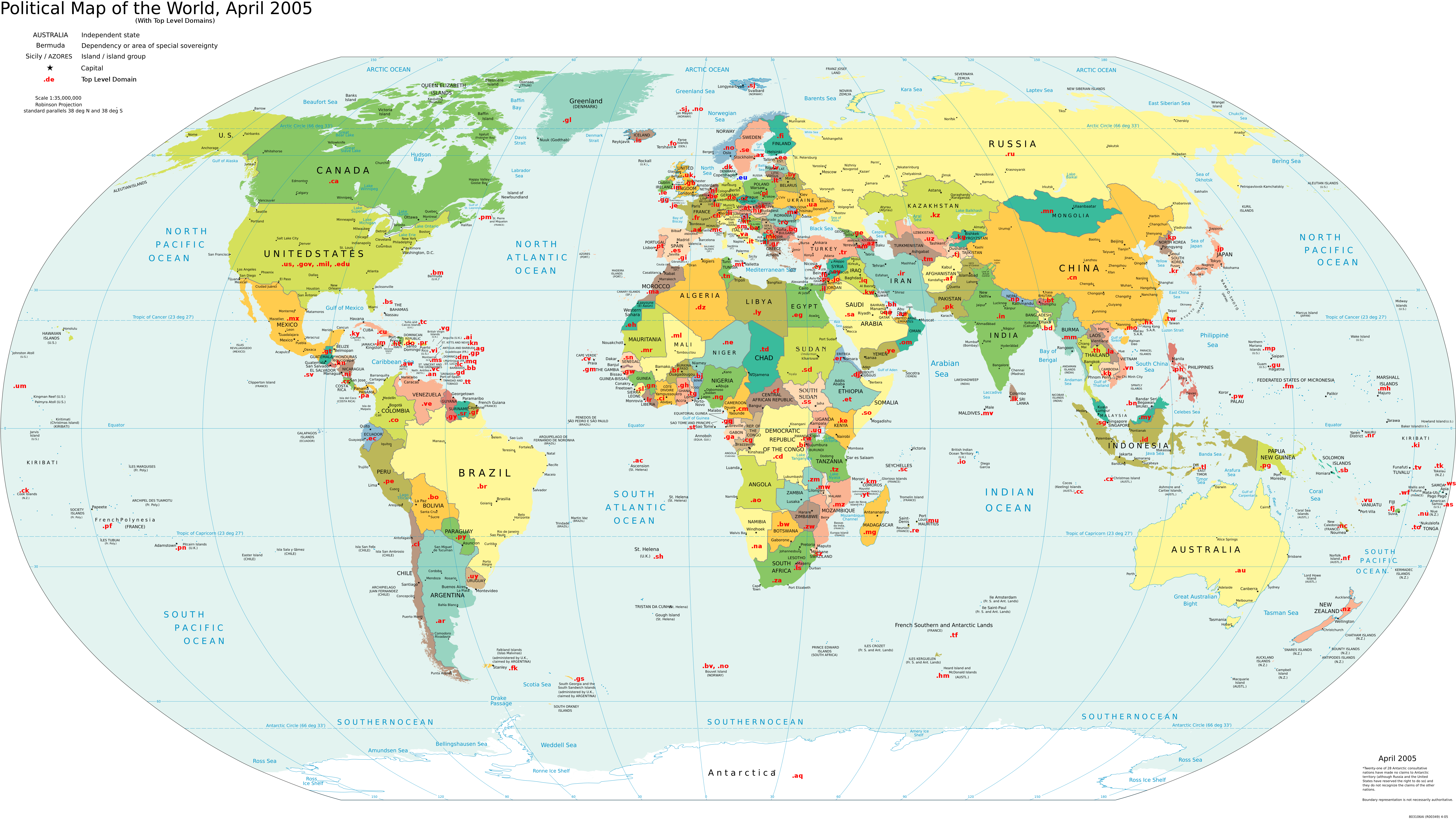
Image Source: Wikimedia Commons
What Is the Concept Outline?
The concept outline breaks world history down into six chronological periods. These are:
- Technological and Environmental Transformations from 8000 BCE to 600 BCE
- Organization and Reorganization of Human Societies from 600 BCE to 600 CE
- Regional and Interregional Interactions from 600 CE to 1450 CE
- Global Interactions from 1450 CE to 1750 CE
- Industrialization and Global Integration from 1750 CE to 1900 CE
- Accelerating Global Change and Realignments from 1900 CE to the Present
Each of the chronological periods in the Concept Outline is directly linked to multiple Key Concepts. The Key Concepts tell you what’s important about each period. Below, you’ll find each of the chronological periods with a brief explanation of all the key concepts associated with the time. Through these periods you can see progressive development. All regions may not be at the same stage of social, economic or political development during the same period. The Key Concepts illustrate how changes have occurred over time throughout the world. The Key Concepts relate to chronological periods. You’ll see them numbered below with the dates associated with each.
1. Technological and Environmental Transformations (8000 to 600 BCE)
The first of the chronological periods, Technological and Environmental Transformations, begins with the Key Concept “Big Geography and the Peopling of the Earth.” This key concept includes the migration of early humans out of Africa as well as the development of technologies including tools and fire—this is commonly called the Paleolithic Age. The second Key Concept is “The Neolithic Revolution and Early Agricultural Societies.” This is the Neolithic Age or new stone age, and includes the development of farming, the first cities, and the growth of social hierarchies. This is followed by “The Development and Interactions of Agricultural, Pastoral and Urban Societies,” or the development of the earliest civilizations. This key concept includes discussions of writing, law, trade, religion, and architecture. If you want to summarize this period, think of it as the beginning of civilization.
2. Organization and Reorganization of Human Societies (600 BCE to 600 CE)
The first Key Concept for the Organization and Reorganization of Human Societies is “The Development and Codification of Religious Traditions.” This period encompasses the writing of the Hebrew Scriptures and the early centuries of Christianity as well as key developments in Taoism, Buddhism, Hinduism, and Confucianism. This chronological period also includes “The Development of States and Empires,” including the ancient Greeks and Romans, the Persian, the Qin and Han, the Mauryan and Gupta, the Maya, the Moche, and several North American states and empires. With the development of states and empires came the “Emergence of Interregional Networks of Communication and Exchange,” which includes a variety of land and sea routes including the Silk Road, Trans-Saharan trade network, Mediterranean Sea routes, and trade networks in the Indian Ocean. In broad terms, we’d call this the ancient world.
3. Regional and Interregional Interactions (600 CE to 1450 CE)
Some of the Key Concepts associated with this chronological period expand upon those in the past unit, including the “Expansion and Intensification of Communication and Exchange Networks.” Connections between different regions through trade networks increased, particularly with the spread of Islam in the 7th century at the beginning of this period. “Continuity and Innovation of State Forms and their Interaction” continues the theme of state building present in the prior period. The growth of these networks and the state led to “Increased Economic Productive Capacity and its Consequences.” To make things simple, this period is known as the middle ages; however, the middle ages can look very different depending on the region!
4. Global Interaction (1450 CE to 1750 CE)
Global Interaction is marked by “Globalizing Networks of Communication and Exchange.” The trade and communication networks already present were permanently reshaped by the European voyages to the Americas and the introduction of the Columbian Exchange. In addition, “New Forms of Social Organization and Modes of Production” appeared during this period. The population increased during this period, as did agricultural productivity. “State Consolidation and Imperial Expansion” also marked this time; empires grew and were significantly challenged by their growth. Sometimes we call this the early modern period.
5. Industrialization and Global Integration (1750 CE to 1900 CE)
The period between 1750 and 1900 is primarily characterized by a gradual move to industrialization called “Industrialization and Global Capitalism” in the Key Concepts. Politically, the concept period of Industrialization and Global Integration is associated with “Imperialism and Nation-state Formation.” While the process of nation-state formation is critical, this is also a period of “Nationalism, Revolution and Reform,” including the French and American Revolutions. “Global Migration” altered the population demographics of many countries as widespread migration occurred, particularly from the countryside to cities and from Europe to the United States. You’ve probably learned about this period as the industrial revolution.
6. Accelerating Global Change and Realignments (1900 CE to present)
The final chronological period begins in 1900 and continues to the present. This period is marked by several significant changes, both political and scientific. “Science and the Environment” encompasses the changes in agriculture, innovations in medicine, the growth military technology, and massive destruction of the environment. “Global Conflicts and their Consequences” is a Key Concept that directly refers to the events and impact of various conflicts ranging from colonial independence to the World Wars. “New Conceptualizations of Global Economy, Society, and Culture,” illustrate the shifting and changing economic and social concepts that impacted the 20th and 21st centuries including the rise, and later fall, of communism, the importance of global communication, and the growth of global trade agreements. For many people, this period is going to come the easiest as you likely know the most about these years; we call it the modern period.
Making a Study Plan
Knowing the format, themes and concepts on the AP® World History exam is only the first step. Once you know these themes and concepts, you have to make sure you’ve mastered the skills necessary for the exam. This includes not only the knowledge of facts, events, people, and dates, but also the skills to think about world history and effectively communicate what you know in your short answers, document-based question, and long free-response question.
Assessing Your Skills
Before you can make a study plan for AP® World History, you need to recognize what you already know and look at your own skills and weaknesses. To do this, you can:
- Look at your test scores in the class. Think about where you performed better and where you struggled. You might, for instance, find that you write a good essay, but have a hard time with multiple-choice questions. You might also be able to recognize that you know some periods or some cultures far better than others.
- Think about your usual academic performance, strengths and weaknesses. If you have a hard time with writing assignments, you’ll need to plan to focus more of your study time on the essays and less on facts and figures.
- Take a practice test. This is one of the smartest moves, especially if you have a teacher willing to review your essays.
Once you’ve looked at your strengths and weaknesses, you can make a smart study plan for AP® World History. Remember, you should allow time for overall review, but also extra time for what you’ve recognized as your weaknesses.
When you make your study plan, it’s also smart to think about how you learn best.
- Visual learners learn best with images; charts, graphics, timelines, maps, and artwork can help you to connect periods and events.
- Some people learn best through reading and writing. Text is one of the best learning tools for this type of learner. If you find that you remember what you read, reading your notes and textbook and making notes can help you to retain information.
- Auditory learners learn most effectively through hearing and speaking. Podcasts, videos, recorded lectures, and even talking with others about what you learn can help you to retain information.
- Other people are most likely to retain information when they connect it with movement or doing. We call this kinesthetic learning. If you’re a kinesthetic learner, you might try studying while you walk or sit on a fitness ball, or actively create projects connected to the work you’re studying.
Many people find that a combination of strategies works best for them; knowing your own strengths will help you to study and retain what you learn.
Preparing for the Test
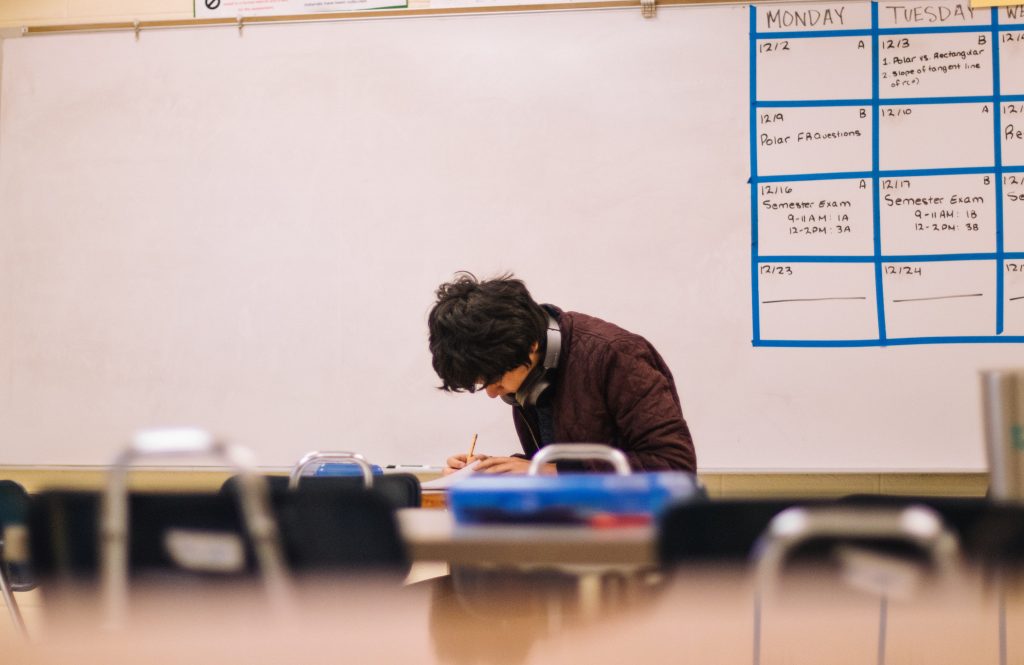
Let’s break down your test preparation into several basic areas.
1. The facts, dates, people, and events.
There are many ways to study these things, ranging from apps for your Smartphone to online quizzes to old-fashioned, hand-written flashcards and timelines. Repetition can be important here, as can context, but really a lot of this is just memorization! In many ways, this is the natural part of preparing for the end of your AP® World History class.
2. Themes, ideas, and historical context.
You can’t study these as easily as you can facts and dates. This is all about connecting what you’ve learned. For some people, this comes easily—they don’t have a hard time seeing the big picture. For others, it’s a lot harder. If you struggle with these big ideas, one of the best ways to learn them is to teach them. Consider starting a study group with classmates and teaching each other, or recruit a friend, parent or sibling, and teach them about the Key Concepts or Thematic Learning Objectives.
3. Organizing and writing.
You also must be able to take what you know, including facts and concepts, and put it to paper. There are two essays on the AP® World History exam, and they’re a bit different. The document-based question type is likely to be less familiar to you and may require more work. Here, sample questions are essential—you’ll find them online from old AP® World History tests, or your teacher may be able to provide them. The free-response essay lets you choose from one of two questions; if you already write well and know the concepts well, this question is less likely to be challenging.
Practicing for the writing portion of the AP® World History test also requires that you practice writing under pressure from the clock. Think about your time as you write. Plan time to outline and to review your work. In total, you will have 55 minutes for the document-based question with 40 minutes allotted for writing and 35 minutes for the free response essay question. Allow around 15 percent of your time for outlining and preparation and final review. That means you have about six minutes for your draft and review for the document-based question and around five minutes for the free response question.
When you practice your essays, you need a serious, critical eye to review your work. Most people can’t do a great job assessing their own work—ask a teacher, visit a writing lab if your school has one, or get a good friend who writes well to review your practice essays and provide feedback. High-scoring essays are essential for a good overall score on the AP® World History test.
Conclusion
The AP® World History exam is a big test, and a good score is the difference between college credit or no credit at all. Fortunately, there are plenty of resources available to help you study and to support you as you get ready for the test. You can review much of what you’ll need to know at Albert.io’s Guide to AP® World History or use this as a helpful guide to see what you still need to work on before test day.
When you’re well-prepared for the AP® World History exam, you can head into test day feeling confident. Get a good night’s rest the night before and eat a healthy breakfast. If you’ve got one, wear a watch (you won’t have your phone to rely on). If you’re a coffee drinker, have your usual cup or two, but don’t overdo it! Finally, plan something pleasant for post-exam, whether it’s lunch with a friend, a shopping trip, or an afternoon of your favorite video games. Having something to look forward to can help you get through test day.
As you begin the exam, remember what you’ve learned, and remember to think like a historian. Watch your time; don’t let yourself get stalled on a single question. There’s no guessing penalty, so if you’re not sure, guess and keep going—but go back to the question if you have time. Think carefully and critically as you answer all the short answer questions and the essay questions. Remember to think about the big ideas as you write.
If you enjoyed this post, be sure to also check out our FAQ on AP® World History here.
Looking for AP® World History practice?
Kickstart your AP® World History prep with Albert. Start your AP® exam prep today.

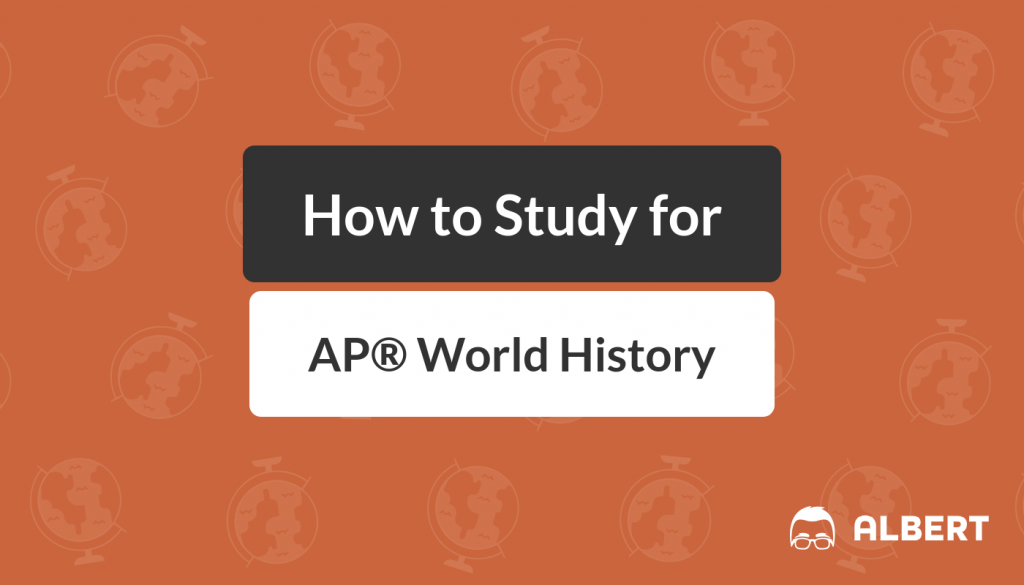
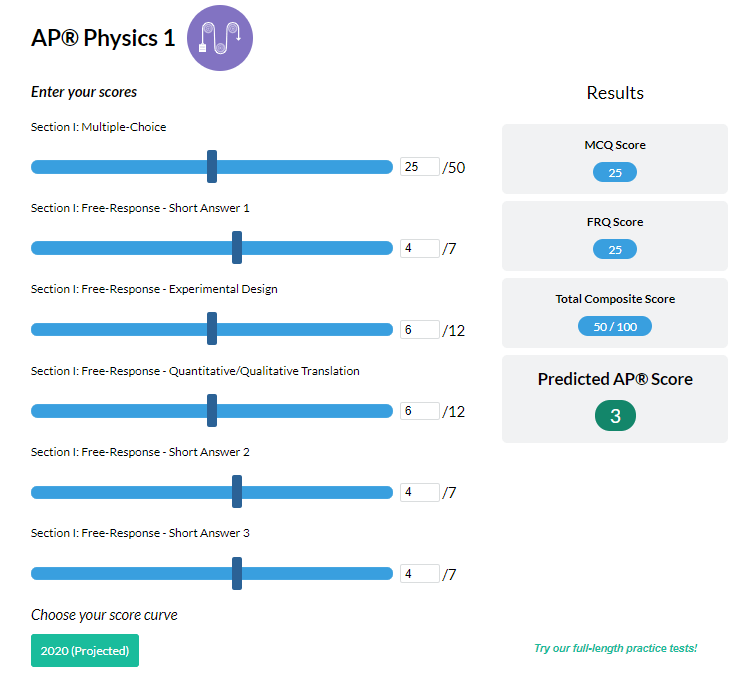
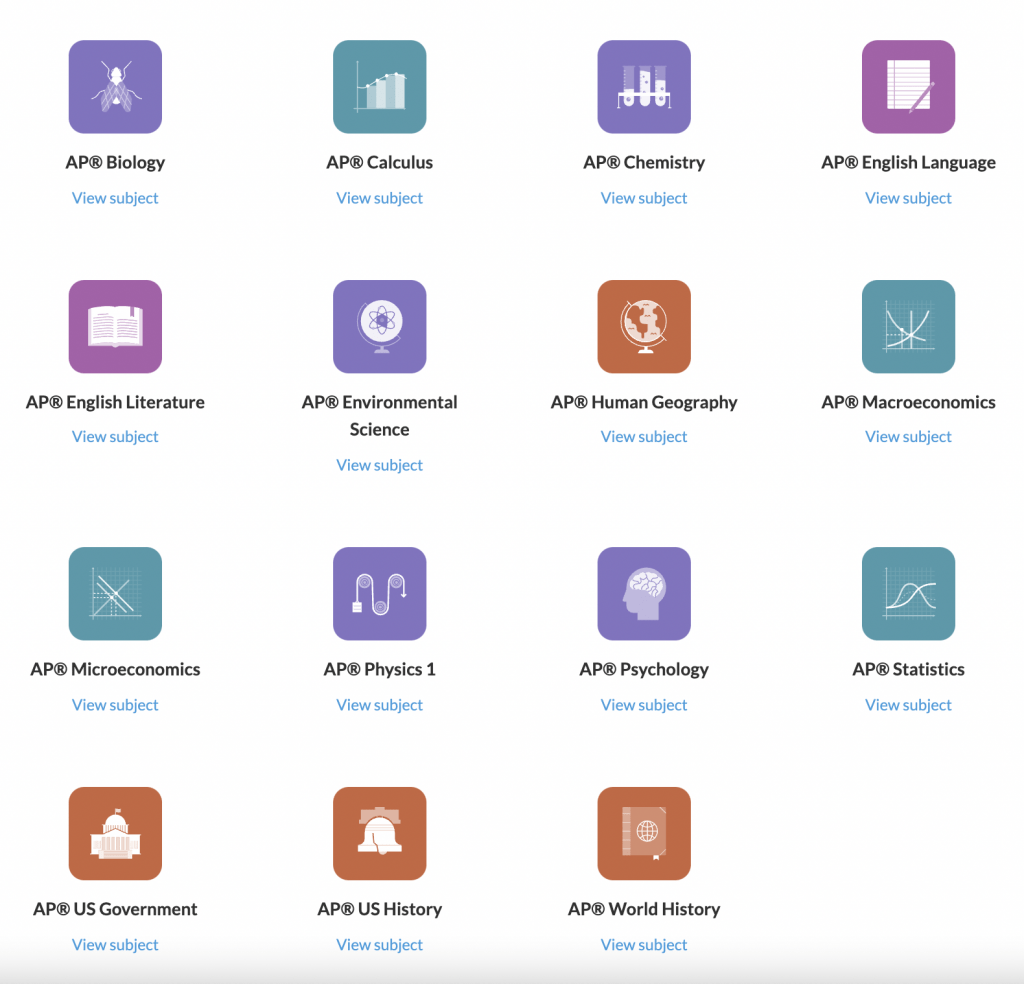
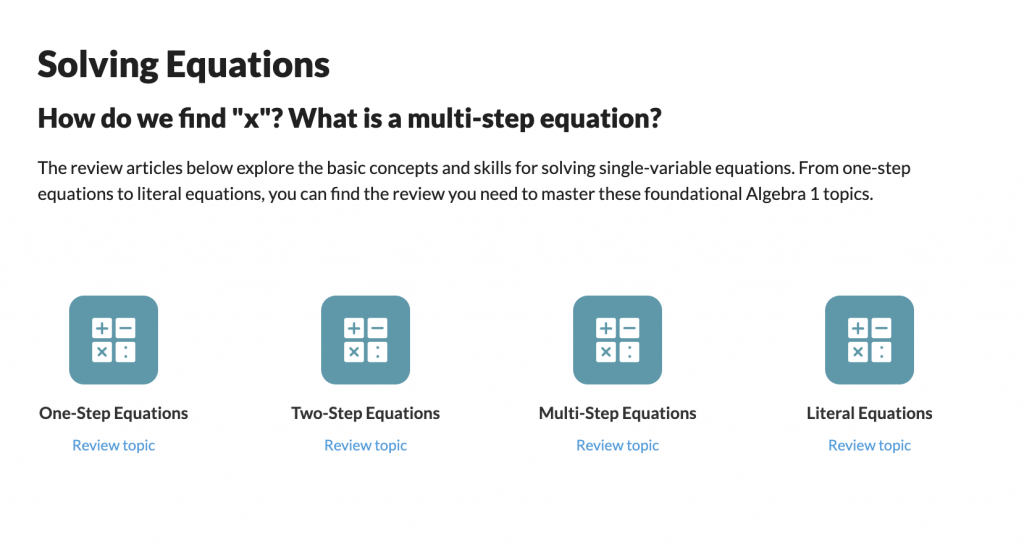
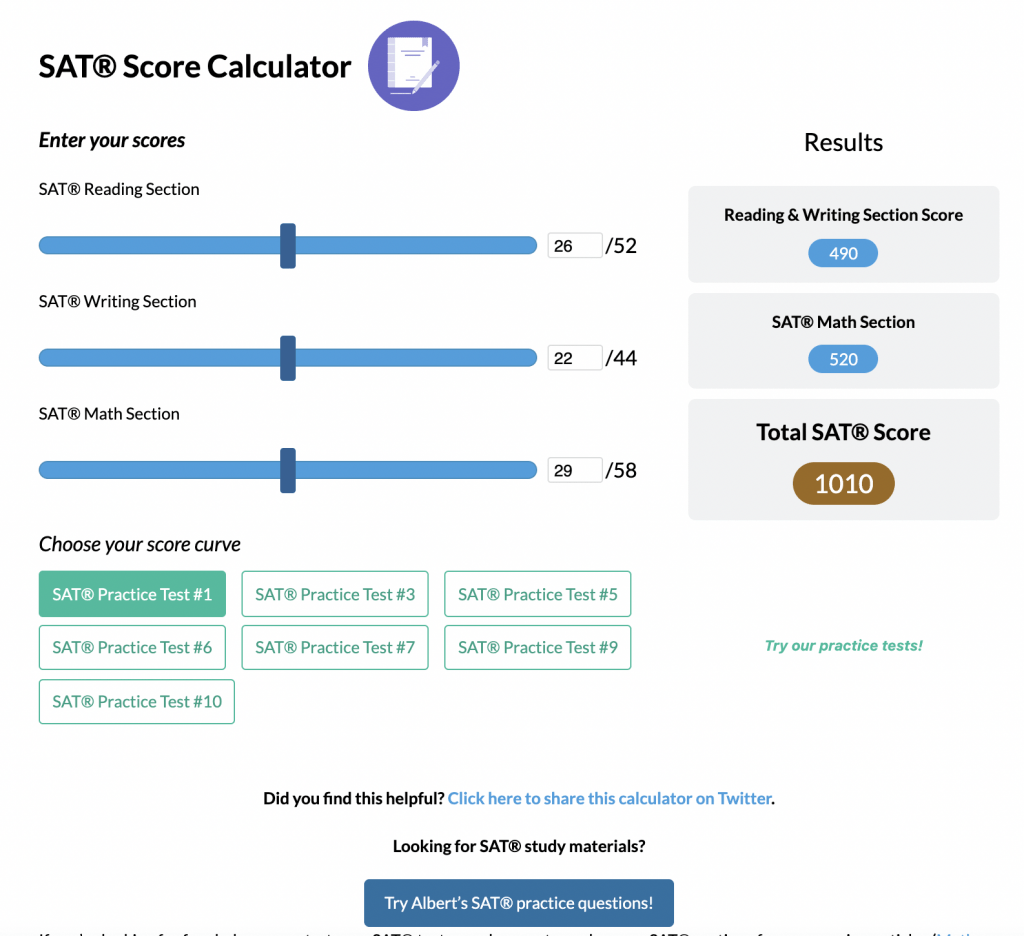
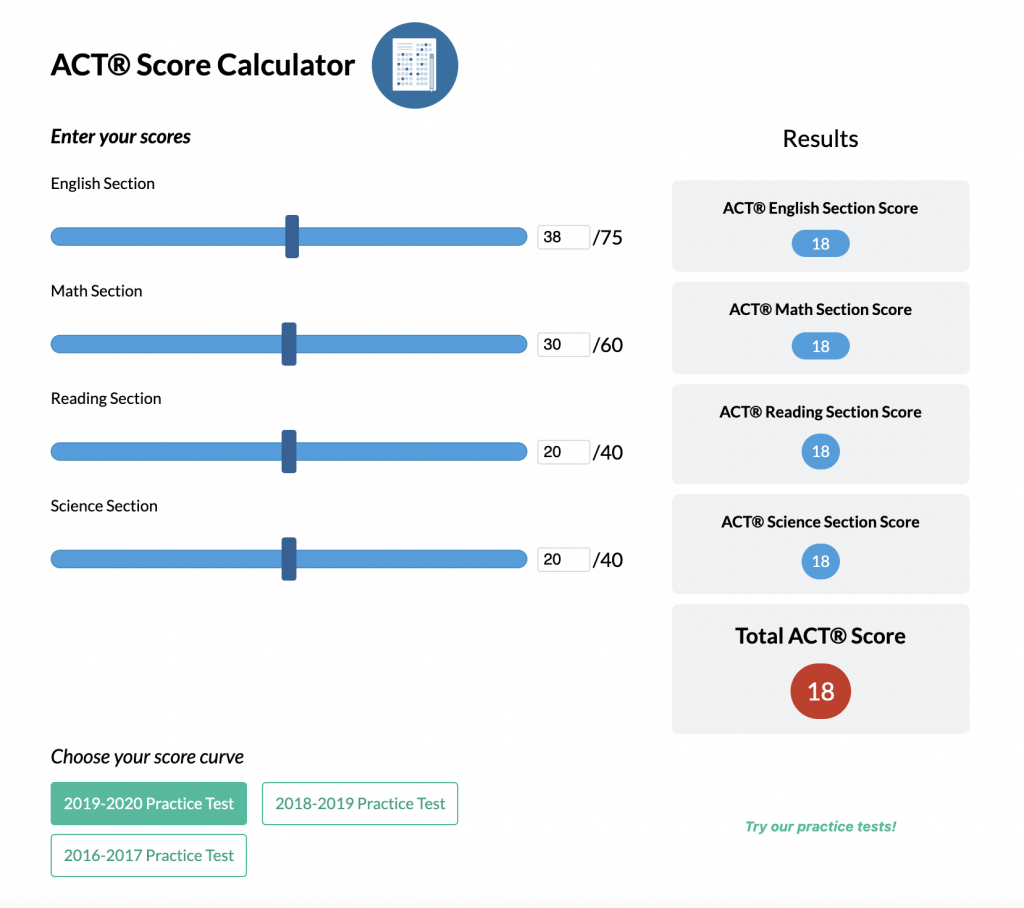
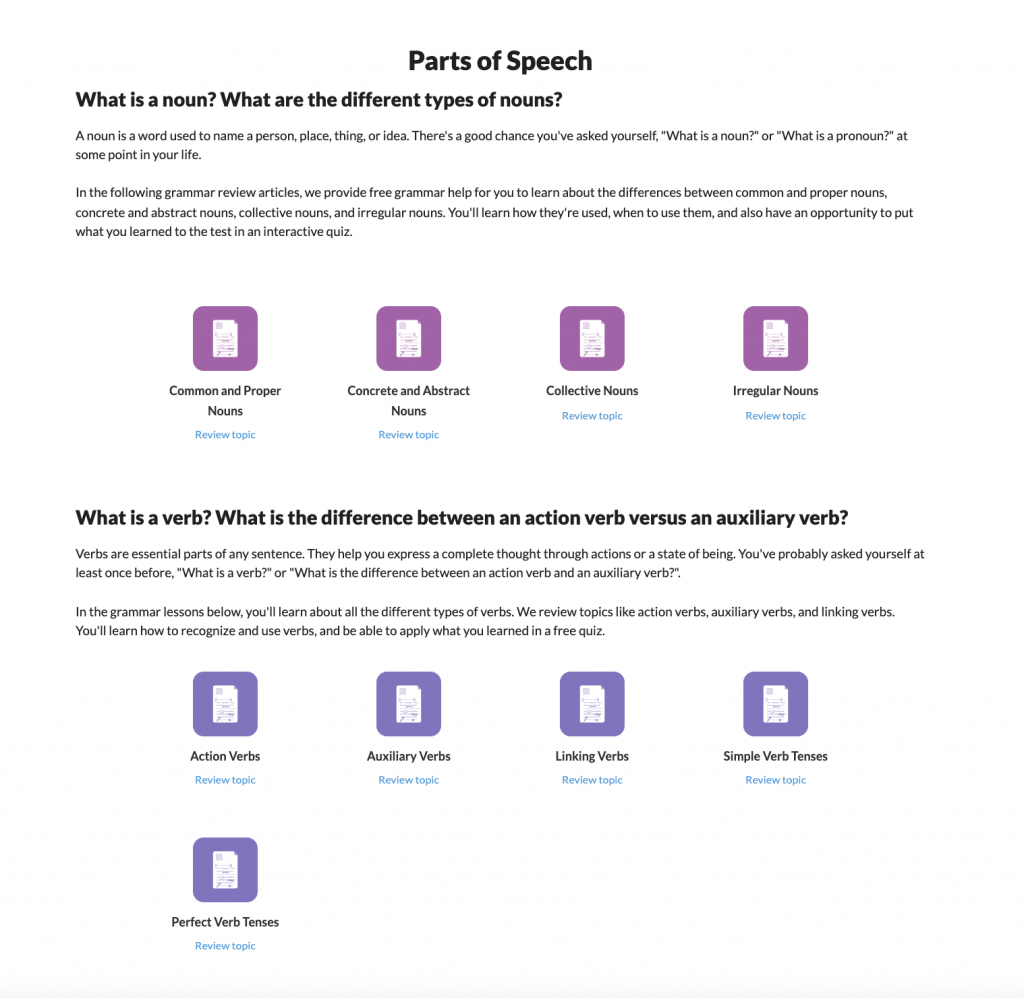
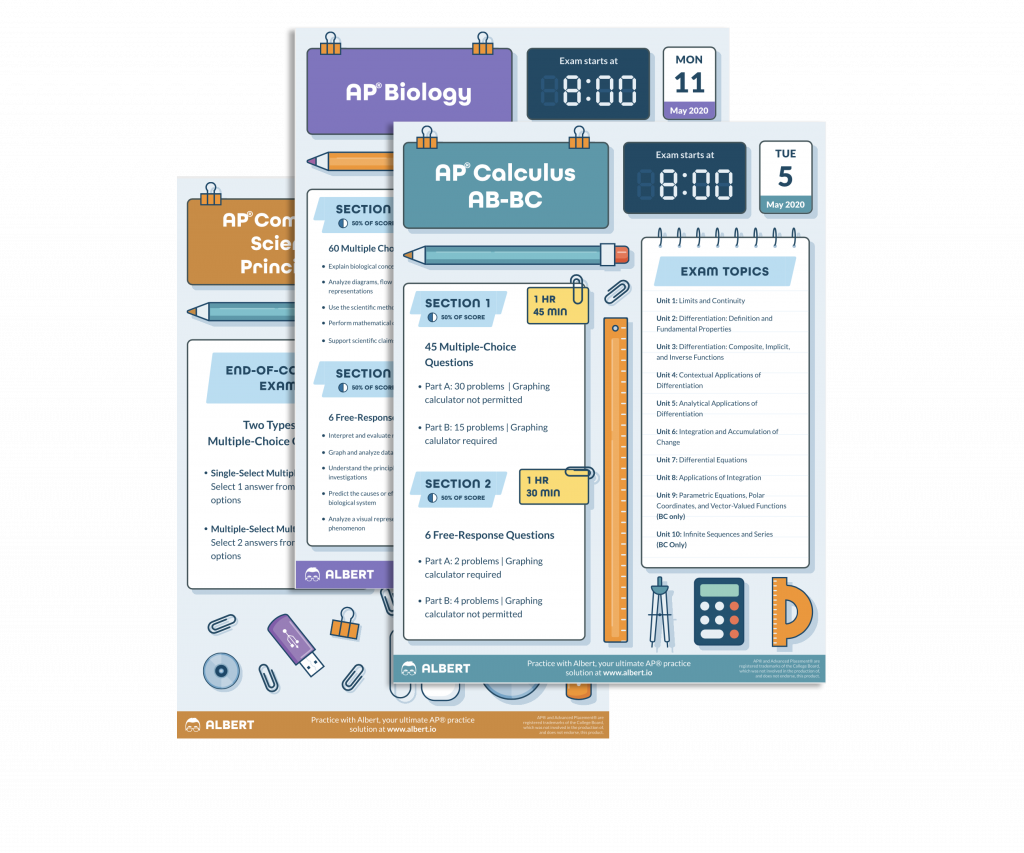
Comments are closed.